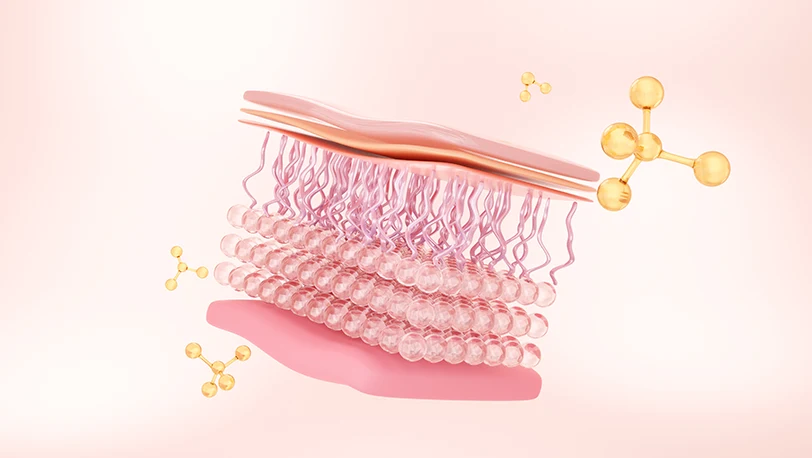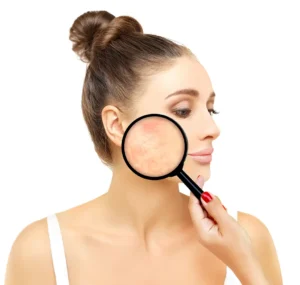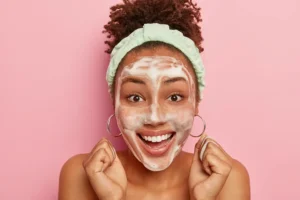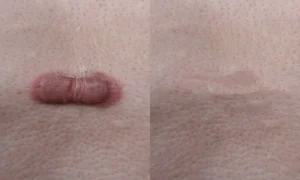Have you ever wished your skincare could work a little harder—like actually reversing the signs of aging or speeding up recovery after a rough breakout? Enter growth factors: the unsung heroes of modern skincare. These powerhouse proteins are like personal trainers for your skin cells, telling them to regenerate, repair, and get back to their youthful glow.
Not sure where to start? Don’t worry—we’re breaking it down in a way that’s easy to understand and practical to use. Your skin’s next big upgrade starts here.
What Are Growth Factors in Skincare?
Growth factors are natural proteins found in the body that act like messengers between cells. They tell your skin to repair itself, produce collagen and elastin, and regenerate tissue. In other words, they’re the catalysts that keep your skin looking firm, smooth, and youthful.
Here’s a quick breakdown of the key types of growth factors commonly found in skincare:
- Epidermal Growth Factor (EGF): Boosts skin renewal and elasticity.
- Fibroblast Growth Factor (FGF): Stimulates collagen production.
- Platelet-Derived Growth Factor (PDGF): Supports wound healing.
- Vascular Endothelial Growth Factor (VEGF): Improves circulation and repair.
How Are Growth Factors Made for Skincare?
Growth factors in skincare aren’t harvested straight from your body (don’t worry!). Instead, they’re produced in labs using advanced technology. Here’s how:
- Human Cell Cultures: Derived from sources like fibroblasts, umbilical cords, or adipose tissue.
- Recombinant Technology: Lab-engineered bacteria or yeast create growth factors safely and sustainably.
- Plant-Based Alternatives: These mimic natural growth factors, offering an option for those seeking plant-derived ingredients.
Why Are Growth Factors a Big Deal?
As we age, our body’s natural production of growth factors slows down. This leads to thinner skin, wrinkles, and slower healing. Skincare products with growth factors aim to bridge that gap. Here’s why they’re worth considering:
They Rejuvenate Aging Skin
Growth factors encourage collagen and elastin production, which helps firm sagging skin and smooth out fine lines.
They Aid in Healing
If you’ve had a procedure like microneedling or a chemical peel, growth factors can speed up recovery by reducing redness and irritation.
They Improve Skin Texture
From hyperpigmentation to rough patches, growth factors promote healthy cell turnover, helping to even out skin tone and texture.
They Work Preventatively
Even if you don’t have visible signs of aging, growth factors can help maintain youthful skin and delay the onset of wrinkles.
Potential Drawbacks: Are Growth Factors Safe?
Before diving in, it’s important to understand the potential challenges and risks:
Penetration
Growth factors are large molecules, so they can’t easily penetrate the skin’s outer layer. This is why they’re often combined with treatments like microneedling to boost effectiveness.
Stability
These proteins are delicate and can lose their potency if not stored properly. Products with airtight, opaque packaging or refrigeration recommendations tend to be more effective.
Cancer Concerns
Since growth factors stimulate cell activity, there’s a theoretical concern about promoting abnormal cell growth. However, concentrations in skincare are typically low, making this risk minimal for most users.
Allergic Reactions
Some people might experience irritation or allergies, so always patch test before applying new products to your face.
Who Should Use Growth Factors?
Growth factors aren’t just for those looking to turn back the clock. They can benefit:
- Aging Skin: To reduce wrinkles and improve elasticity.
- Post-Procedure Recovery: To calm and heal treated skin faster.
- Sun-Damaged Skin: To repair pigmentation and uneven texture.
- Prevention Enthusiasts: To delay visible signs of aging.
Who Should Proceed with Caution? If you have sensitive skin or a compromised barrier, consult a dermatologist before adding growth factors to your routine.
How to Add Growth Factors to Your Skincare Routine
Adding growth factors to your regimen is simpler than you might think:
- Step 1: Cleanse your face thoroughly.
- Step 2: Apply a growth factor serum while your skin is clean and dry.
- Step 3: Follow with a moisturizer to seal in the benefits and maintain hydration.
- Step 4: Use sunscreen during the day to protect your skin from further damage.
Pro Tip: Pair growth factors with treatments like microneedling to enhance penetration and efficacy.
Best Growth Factor Products for Every Budget
Affordable Picks
- The Ordinary Buffet + Copper Peptides: Combines peptides with growth factors for improved elasticity and hydration.
- Neutrogena Rapid Wrinkle Repair Serum: Includes growth factor-inspired technology to accelerate cell turnover.
Luxury Splurges
- Tensage Intensive Serum 40: Clinically proven to improve wrinkles, texture, and skin tone.
- NeoCutis Lumière Firm Riche: A rich, indulgent cream packed with growth factors and antioxidants for deep hydration and anti-aging benefits.
The Future of Growth Factors in Skincare
The science of growth factors is constantly evolving. Researchers are exploring advanced delivery methods, such as microneedling patches and nanotechnology, to improve their absorption and results. We’re also seeing innovative formulations that pair growth factors with other powerhouse ingredients like peptides and hyaluronic acid for even greater benefits.
FAQs About Growth Factors in Skincare
Are growth factors safe for all skin types?
Generally, growth factors are safe for most skin types, including sensitive skin. However, it’s important to patch test before using any new product, as some formulations may contain additional active ingredients that could cause irritation. Always consult a dermatologist if you’re unsure.
Can I use growth factors with other active ingredients like retinol or vitamin C?
Yes, but proceed cautiously. Growth factors are typically gentle, but combining them with strong actives like retinol or vitamin C may cause irritation for sensitive skin. If you plan to use multiple actives, consider alternating them—use retinol at night and growth factors in the morning—or layer them with a hydrating barrier cream to prevent sensitivity.
Are plant-based growth factors as effective as human-derived ones?
Plant-based growth factors mimic the functions of human-derived growth factors but may not be as precise in targeting human skin processes. However, they’re a great alternative for those seeking vegan-friendly options or with concerns about human-sourced ingredients. Look for clinical studies supporting their efficacy before committing to a product.
Do I need to refrigerate products with growth factors?
Not always, but it depends on the formulation. Growth factors are sensitive to heat and light, so products stored in airtight, opaque packaging are often stable at room temperature. However, some brands recommend refrigeration to extend product potency, especially for serums. Check the packaging for specific storage instructions.
How long does it take to see results with growth factors?
Patience is key. Visible improvements like smoother texture or reduced wrinkles typically take 8–12 weeks with consistent use. Some benefits, like faster post-treatment healing, may be noticeable sooner. Long-term results depend on product quality, proper usage, and your overall skincare routine.
References:
pmc.ncbi.nlm.nih.gov
pmc.ncbi.nlm.nih.gov
AcneAdvocate is a participant in the Amazon affiliate advertising program and this post may contain affiliate links, which means we may earn a commission or fees if you make a purchase via those links.





